KHOF-TV PHOTO GALLERY
Here are some miscellaneous photographs and facts from the archives of KHOF-TV.





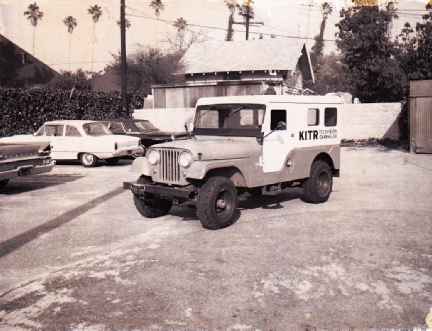
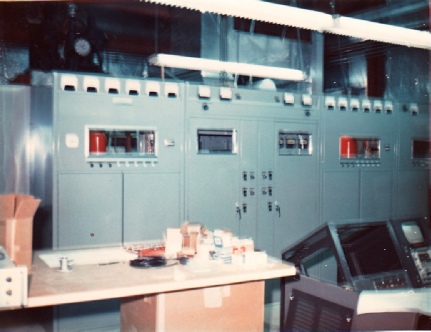

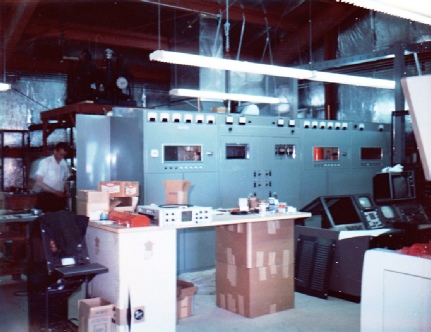
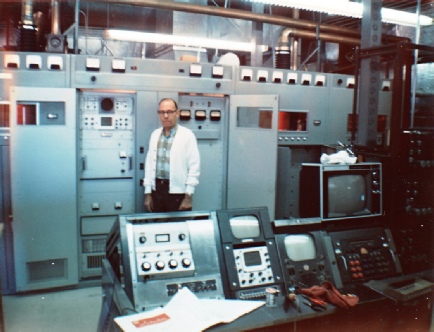



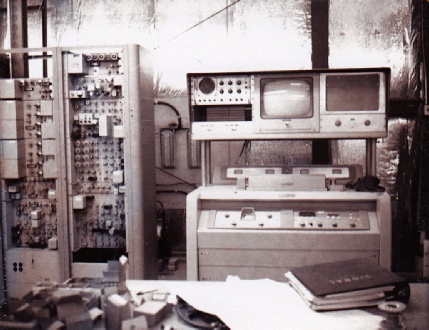
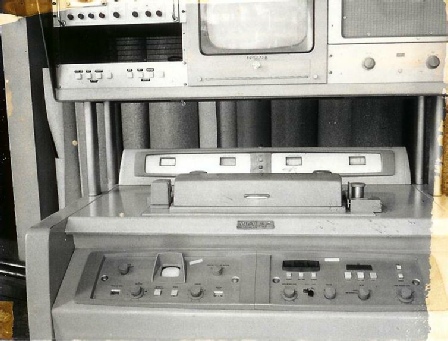


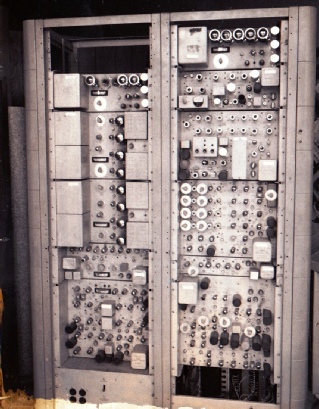
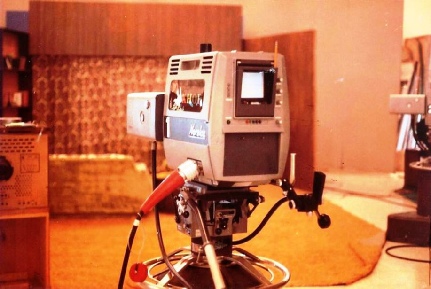

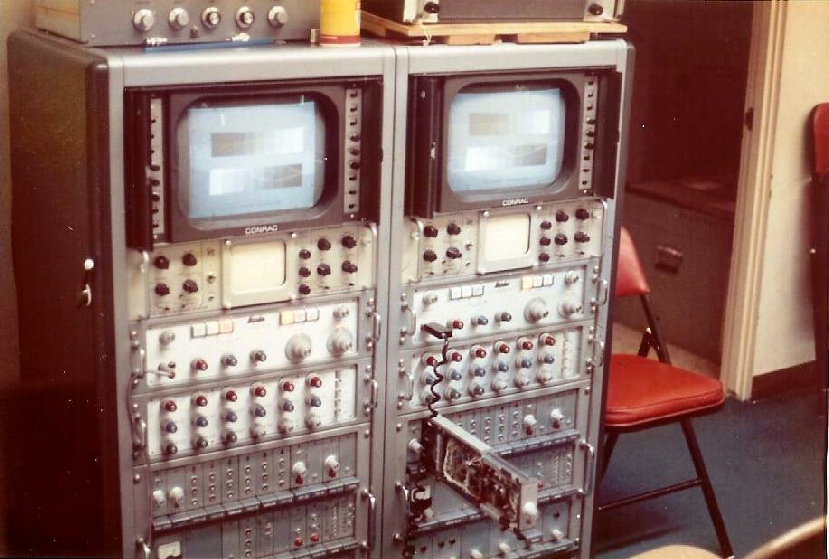
A view on a chilly morning of a snow capped Mount Baldy in the distance. This photo was taken just outside the transmitter building front door on Sunset Ridge. The elevation of Sunset Ridge is 5,400 feet above sea level and located just north of Claremont, California.
Mount Baldy, also known as Mount San Antonio, is to the north of Sunset Ridge and stands 10,068 feet above sea level.
Climbing a dirt forestry road was a challenge during times of snow, mud and slides. Access required using a 4-wheel drive vehicle. Above is the first vehicle used by the transmitter operators. Note the original call sign of KITR.
Bernie Marston adds this comment,”The picture of the Jeep was made in the back parking lot of my shop in So. Pasadena. I don't know why. I converted it to FWD in my back yard there with parts from Byron's old military jeep.”
The person in the center of the photo above is believed to be KHOF-TV engineer Fred Hoehn. The identity of the persons to his left and right remains unknown.
KHOF-TV engineer, Fred Hoehn, is doing some wiring on the transmitter. For the engineer types reading this you can click the picture above to see the control ladder schematic drawn by Bernie Marston.
The device on the stand is not a still, it is a “Filterplexer.” It combines the high power audio and video radiofrequency signals into one which is sent to the antenna. This area is in back of the transmitter. The filterplexer was charged with sulphur hexafluoride gas which gave it high power handling capability. The machinery behind the filterplexer stand is a heat-exchanger. While, again, not a still, it condenses the steam produced by the transmitter tubes back into water. Bernie Marston adds,”Grady Hughes, Faith Center board member, built the filterplexer and heat exchanger stands from my drawings in his metal shop in Glendale.”
A different shot shot of the filterplexer on the left and the front of the transmitter cabinets on the right. This is an earlier photo as the high power transmission lines connecting the transmitter to the filterplexer were not installed as seen on the left photo. The filterplexer “blew-up” in the early 70’s filling the transmitter room with burned and black Teflon soot. No worries, Tim Rote, the transmitter operator on duty quickly hit the transmitter off button and exited the building letting “the dust” settle. That was the end of the filterplexer. It was replaced by a less complicated combiner not requiring a gas charge.
A front view of the transmitter. The red piece of equipment behind the glass is the klystron tube that creates the high power radiofrequency signal transmitted from the antenna. The visual tube is on the left and the aural tube is to the right. The control console used for switching what went on the air is partially seen on the right and in the foreground.
This was taken in back of the transmitter cabinets. The red poles in the foreground are the filterplexer stand. The visual klystron tube is in the distance on the right. The aural klystron is barely seen to the distant left. These tubes had 18,000 Volts applied to them to amplify the low-level radiofrequency signal of a few Watts to tens of thousands of Watts for transmission!
Another view of the transmitter cabinets with the control console on the right and in front of the transmitter.
Taken circa 1969, founder and Pastor of Faith Center, Rev. Ray Schoch, poses in front of the transmitter.
As mentioned earlier, the high-power aural and visual radiofrequency signals are combined into one line and sent up a tower to an antenna on top. You will notice that the tower structure is supported by the use of guy wires to keep it from collapsing. At the top of the tower is the KHOF-TV, Channel 30, transmitting antenna.
A new television station is constructed under an authorization issued by the FCC called a Construction Permit. Once construction is completed and equipment performance is verified, the FCC issues a license. This is a copy of the original KHOF-TV license. (Click the document above for an enlarged view)
A view of the 2” tape deck is on the left. The large 2” videotape reels were placed on the reel hubs (one is shown on the left on the deck top). The picture monitor is shown on the middle of the bridge above the deck. An audio speaker is on the right of the bridge and a waveform monitor used when adjusting video levels is on the left side of the bridge.
Here are two fully loaded equipment racks with all the support electronics needed to make the VTR operational. You can see in the picture the large number of vacuum tubes that were used.
A close up of the deck of this Ampex VR-1000 VTR. Various operational knobs can be seen that the operator used to set up each tape to ensure optimum picture playback from the machine.
A rear view of the tape deck. Yes, the canister in the lower right is a vacuum pump used to hold the videotape in the headwheel assembly that picked up the magnetic video impulses recorded on the tape,
This view shows the VTR machine in the distance with the racks of equipment to the left of the deck. The gear is in its final position in the transmitter room.
A closer view of the VTR deck and associated equipment racks to the left.
A behind the camera view. The camera operator looks through the black & white viewfinder to frame the shot. The focus control is on the left pan-handle (not visible) and the zoom crank is on the right. The camera is mounted on a lead weight counterbalanced pedestal for height adjustment.
The front view of Camera 1. The red tally light on top glows when a camera is live on-the-air. Notice the zoom lens is made by Angenieux. The cable with the red strain relief connects the camera to the control electronics located in another room.
This is the “business end” of the PC-70 camera. Two camera control units (CCU) are shown. The right CCU is undergoing some maintenance as can be seen with one of the circuit modules on an extender card. The operator sets up the camera and ensure perfect pictures using the myriad of knobs seen in the photo.
The piece of equipment on the top of the left rack is a “home brewed” chroma keyer. This device is used to place on camera talent, standing in front of a blue or green wall, against any type of video background desired. It is often used to create special effects such as a person flying through the air. For those of you that may be technically inclined or curious click the icon below to see the article and schematic of the unit we constructed.
We trust you have enjoyed viewing photos that were taken at the KHOF-TV transmitter and studio along with our comments. Thanks are extended to Al and Linda Davis, Bernie Marston and Bruce Braun for contributing from their picture collection.
When KHOF-TV first signed on the air film and videotaped programs were played from equipment located at Sunset Ridge. Here are some photos of the first Videotape Recorder (VTR) at Sunset Ridge. Notice that this VTR consisted of all vacuum tubes! There was hardly a need for heating in the transmitter room with this baby boiling off heat from the tubes. The machine pictured is an Ampex VR-1000.
The story goes that when the machine arrived from its former owner a note was placed inside the headwheel cover (The headwheel is made up of 4 magnetic pick-up heads that retrieve the magnetic impulses recorded on the tape and spins at 14,400 RPM!) that read, “Good Luck!” Bernie Marston states, “I bought the VR-1000 from RCA, who had taken it as a trade-in from KOA Denver, hence the "good luck". [Editor’s note: RCA and Ampex were fierce competitors in the 2” VTR business at the time.] Of course, Bernie got the machine going and it was in service for many years
An exciting day for the staff of KHOF-TV was when the Norelco PC-70 color cameras rolled in the door. The PC-70 was a high quality state-of-the-art color television camera in the early 1970’s. KHOF-TV acquired these cameras circa 1972.

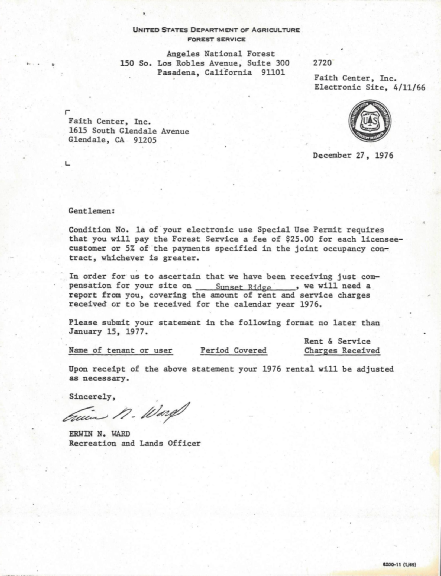
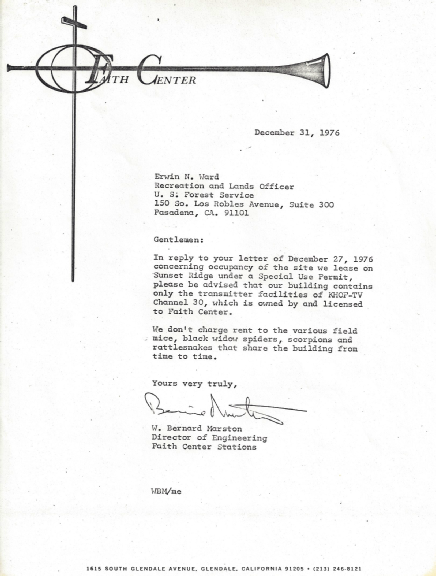
The KHOF-TV transmitter site was located in the Angeles National Forest under the the jurisdiction of the U.S. Department of Agriculture, Forest Service. Faith Center was granted a Special Use Permit (SUP) for its operations. One of the conditions of the SUP was that we would report any users we sublet to and pay a percentage of the income derived. The letter above on the left was sent to Bernie Marston notifying him that a report needed to be submitted. Bernie’s response stated we did not sublet to anyone else. Note particularly his rather humorous response found in the last paragraph of his letter on the right. Click on either letter above to open a PDF version for easier reading.


It seemed that every four to five years we would experience a fire at Sunset Ridge. As the brush grew up it would provide fuel for fires started be either careless individuals or by nature during a lightning strike. The picture taken on the left is looking to the southeast and just below the transmitter building. The picture on the right is looking up at the tower and transmitter building. The person standing to the right of the water tank is unidentified. Fires could prevent transmitter access resulting in KHOF-TV not going on-the-air for several days.
Zoom in on the red map pin above for a close up view of the former KHOF-TV transmitter site